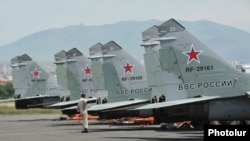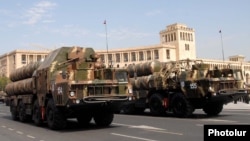A new Russian-Armenian system of joint air defense agreed by the two sides recently will boost Armenia’s national security and will not limit its sovereignty, the authorities in Yerevan insisted on Thursday.
The Armenian government and Defense Ministry dismissed concerns voiced by their pro-Western critics over a relevant agreement which the defense ministers of Russia and Armenia signed in Moscow in December.
The Russian and Armenian militaries have been jointly protecting Armenia’s airspace ever since the mid-1990s as part of a defense alliance binding the two countries. The agreement in question would deepen that arrangement through the creation of a Russian-Armenian “united regional system of air defense.”
Under the agreement, the air-defense system will cover “the Caucasian region” presumably encompassing southern Russia, Armenia and adjacent territory in the South Caucasus. It will be led by the commander of Russia’s Southern Military District and “coordinated” by the Russian Air Force chief.
Armenian opposition politicians, media commentators and analysts have seized upon this provision, saying that it poses a threat to Armenia’s independence and even security. Some of them have gone as far as to claim that Yerevan is placing Armenian airspace under Russian control.
The Defense Ministry sought to disprove those allegations with a statement explaining key provisions of the agreement expected to be ratified by the Armenian parliament later this month. It argued that an Armenian army general will be in charge of all air-defense forces deployed within Armenia. Those include sophisticated S-300 and Buk surface-to-air missiles as well as MiG-29 fighter jets that are part of the Russian military base headquartered in Gyumri.
These anti-aircraft weapons will be used in accordance with Armenian law, stressed the ministry statement. It said the Russian military will take command of Armenia’s air defenses only if the Armenian side is unable to cope with external threats.
The statement also emphasized that the upgraded joint system will not comprise all anti-aircraft and aviation units of the Armenian army. Nor will the system “influence” Armenia’s military contacts with Nagorno-Karabakh, it said.
Deputy Foreign Minister Shavarsh Kocharian also defended the Russian-Armenian agreement. “It will give us the capacity to meticulously monitor the entire territory around us,” Kocharian told reporters. “We currently don’t have the kind of capacity which is provided by Russian facilities.”
The Defense Ministry indicated in this regard that the deal will give the Armenian military access to Russian spy satellite data. “The Russian side also has surveillance systems that too can be used to the benefit of Armenian air-defense forces,” it added without elaborating.





